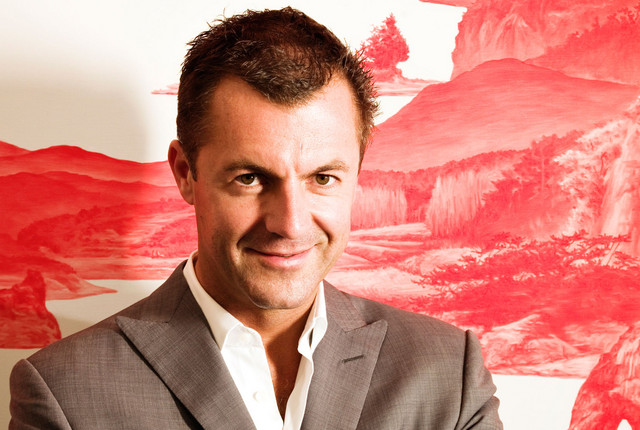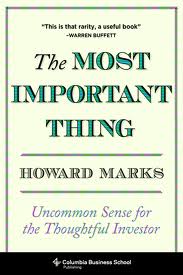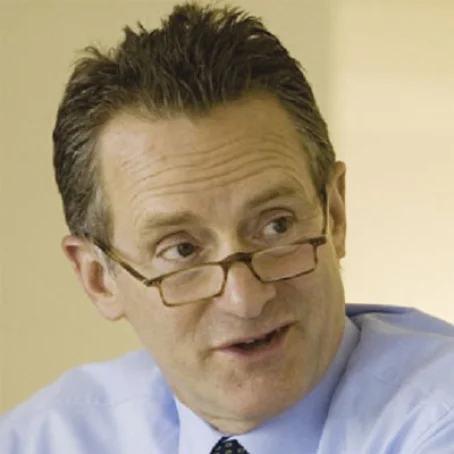Michael Platt and BlueCrest Capital have been in the headlines recently as the latest hedge fund billionaire to return external capital and morph into a private partnership / family office. Below are portfolio management tidbits from Platt's interview with Jack Schwager in Hedge Fund Market Wizards. Capital Preservation, Risk, Team Management
“I have no appetite for losses. Our discretionary strategy’s worst peak-to-trough drawdown in over 10 years was less than 5 percent, and this strategy lost approximately 5 percent in one month. One thing that brings my blood to a boiling point is when an absolute return guy starts talking about his return relative to anything. My response was, ‘You are not relative to anything, my friend. You can’t be in the relative game just when it suits you and in the absolute game just when it suits you. You are in the absolute return game, and the fact that you use the word relative means that I don’t want you anymore.’”
“The risk control is all bottom-up. I structured the business right from the get-go so that we would have lots of diversification. For example, on the fixed income side, I hire specialists. I have a specialist in Scandinavian rates, a specialist in the short end, a specialist in volatility surface arbitrage, a specialist in euro long-dated trading, an inflation specialist, and so on. They all get a capital allocation. Typically, I will hand out about $1.5 billion for every $1 billion we manage because people don’t use their entire risk allocation all the time. I assume, on average, they will use about two thirds. The deal is that if a trader loses 3 percent, he has to give me back half of his trading line. If he loses another 3 percent of the remaining half, that’s it. His book is auctioned. All the traders are shown his book and take what they want into their own books, and anything that is left is liquidated.”
“Q: What happens to the trader at that point? Is he out on the street? A: It depends on how he reached his limit. I’m not a hard-nosed person. I don’t say, you lost money, get out. It’s possible someone gets caught in a storm. A trader might have some very reasonable Japanese positions on, and then there is a nuclear accident, and he loses a lot of money. We might recapitalize him, but it depends. It is also a matter of gut feel. How do I feel about the guy?
Q: Is the 3 percent loss measured from the allocation starting level? A: Yes, it is definitely not a trailing stop. We want people to scale down if they are getting it wrong and scale up if they are getting it right. If a guy has a $100 million allocation and makes $20 million, he then has $23 million to his stop point.
Q: Do you move that stop up at any point? A: No, it rebases annually.
Q: So every January 1, traders start off with the same 3 percent stop point? A: Yes, unless they carry over some of their P&L. One year, one of my guys made about $500 million of profits. He was going to get a huge incentive check. I said to him, ‘Do you really want to be paid out on the entire $500 million? How about I pay you on $400 million, and you carry over $100 million, so you still have a big line.’ He said, ‘Yeah, that’s cool. I’ll do that.’ So he would have to lose that $100 million plus 3 percent of the new allocation before the first stop would kick in.”
“I don’t interfere with traders. A trader is either a stand-alone producer or gone. If I start micromanaging a trader’s position, it then becomes my position. Why then am I paying him such a large percentage of the incentive fee?”
“We have a seven-person risk management team…The key thing they are monitoring for is a breakdown in correlation…because most of our positions are spreads. So lower correlations would increase the risk of the position. The most dangerous risks are spread risks. If I assume that IBM and Dell have a 0.95 correlation, I can put on a large spread position with relatively small risk. But if the correlation drops to 0.50, I could be wiped out in 10 minutes. It is when the spread risks blow up that you find out that you have much more risk than you thought.
Controlling correlations is the key to managing risk. We look at risk in a whole range of different ways…They stress test the positions for all sorts of historical scenarios. They also scan portfolios to search for any vulnerabilities in positions that could impact performance. They literally ask the traders, ‘If you were going to drop $10 million, where would it come from?’ And the traders will know. A trader will often have some position in his book that is a bit spicy, and he will know what it is. So you just ask him to tell you. Most of what we get in the vulnerabilities in positions reports, we already know anyway. We would hope that our risk monitoring systems would have caught 95 percent of it. It is just a last check.”
Creativity, Psychology
“The type of guy I don’t want is an analyst who has never traded—the type of person who does a calculation on a computer, figures out where a market should be, puts on a big trade, gets caught up in it, and doesn’t stop out. And the market is always wrong; he’s not…
I look for the type of guy in London who gets up at seven o’clock on Sunday morning when his kids are still in bed, and logs onto a poker site so that he can pick off the U.S. drunks coming home on Saturday night. I hired a guy like that. He usually clears 5 or 10 grand every Sunday morning before breakfast taking out the drunks playing poker because they’re not very good at it, but their confidence has gone up a lot. That’s the type of guy you want —someone who understands an edge. Analysts, on the other hand, don’t think about anything else other than how smart they are.”
“I want guys who when they put on a good trade immediately start thinking about what they could put on against it. They just have the paranoia. Market makers get derailed in crises far less often than analysts. I hired an analyst one time who was a very smart guy. I probably made 50 times more money on his ideas than he did. I hired an economist once, which was the biggest mistake ever. He lasted only a few months. He was very dogmatic. He thought he was always right. The problem always comes down to ego. You find that analysts and economists have big egos, which just gets in the way of making money because they can never admit that they are wrong.”
“Both the ex-market makers who blew up became way too invested in their positions. Their ego got in the way. They just didn’t want to be wrong, and they stayed in their positions.”
Psychology, Opportunity Cost, Mistake
“I don’t have any tolerance for trading losses. I hate losing money more than anything. Losing money is what kills you. It is not the actual loss. It’s the fact that it messes up your psychology. You lose the bullets in your gun. What happens is you put on a stupid trade, lose $20 million in 10 minutes, and take the trade off. You feel like an idiot, and you’re not in the mood to put on anything else. Then the elephant walks past you while your gun’s not loaded. It’s amazing how annoyingly often that happens. In this game, you want to be there when the great trade comes along. It’s the 80/20 rule of life. In trading, 80 percent of your profits come from 20 percent of your ideas.”
“…I look at each trade in my book every day and ask myself the question, 'Would I enter this trade today at this price?' If the answer is 'no,' then the trade is gone.”
“When I am wrong, the only instinct I have is to get out. If I was thinking one way, and now I can see that it was a real mistake, then I am probably not the only person in shock, so I better be the first one to sell. I don’t care what the price is. In this game, you have an option to keep 20 percent of your P&L this year, but you also want to own the serial option of being able to do that every year. You can’t be blowing up.”
How many of us have been in a situation when we were busy putting out fire(s) on existing position(s) when we should have been focused on new/better ideas?
Exposure
“I like buying stuff cheap and selling it at fair value. How you implement a trade is critical. I develop a macro view about something, but then there are 20 different ways I can play it. The key question is: which way gives me the best risk/return ratio? My final trade is rarely going to be a straight long or short position.”
His core goal is not all that different from what fundamental investors are try to achieve: buy cheap, sell a fair or higher value. The main difference stems from how the bets are structured and the exposures created.
Creativity, Diversification, Correlation
“I have always liked puzzles…I always regarded financial markets as the ultimate puzzle because everyone is trying to solve it, and infinite wealth lies at the end of solving it."
“Currently, because of the whole risk-on/risk-off culture that has developed, diversification is quite hard to get. When I first started trading about 20 years ago, U.S. and European bond markets weren’t really that correlated. Now, these markets move together tick by tick.”
“The strategy is always changing. It is a research war. Leda has built a phenomenal, talented team that is constantly seeking to improve our strategy.”
Markets are a zero sum game less transaction costs. Participants / competitors are constantly shifting and changing their approach to one-up each other because there is infinite wealth involved. What worked yesterday may not work today or tomorrow. Historical performance is not indicative of future result. This is also why so many quantitative frameworks for diversification and correlation that use historical statistics are so flawed. Investors must constantly improve and adapt to current and future conditions. Otherwise someone else will eat your lunch.



















